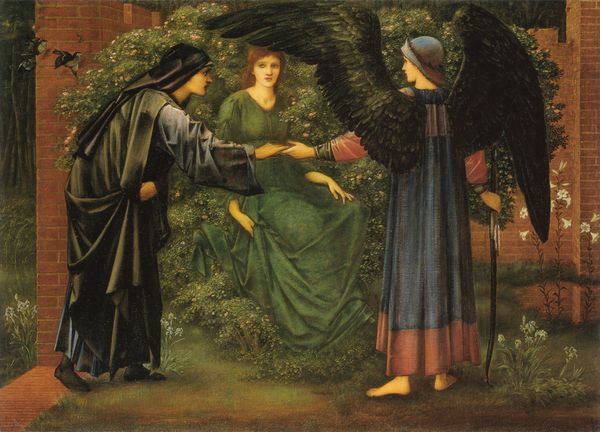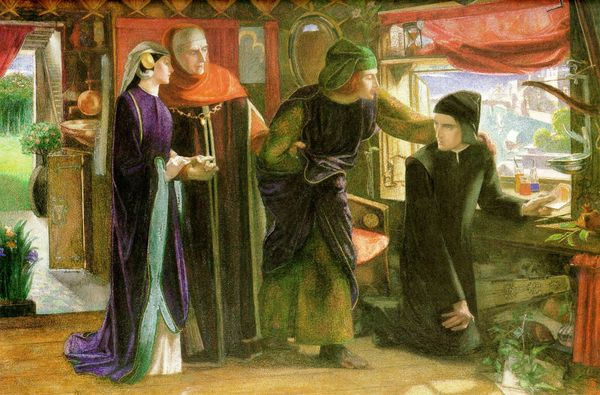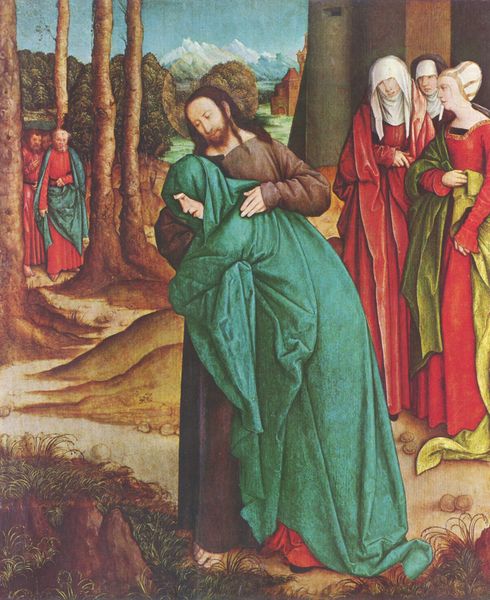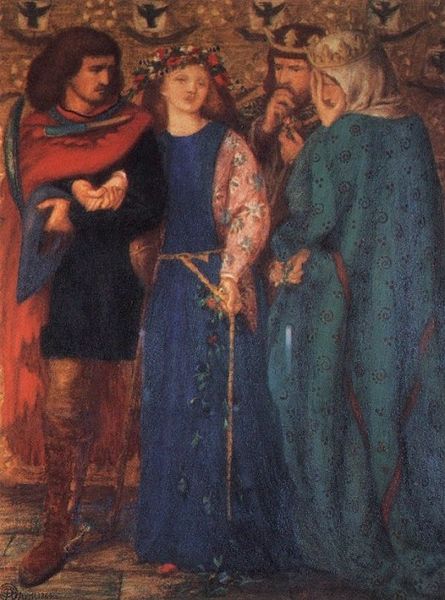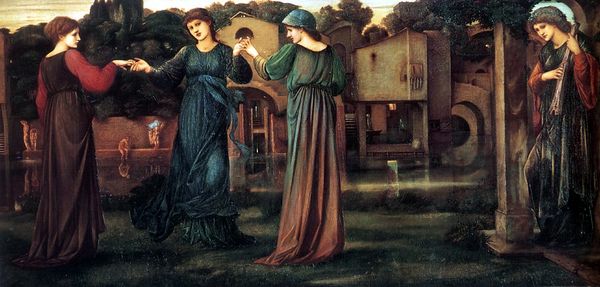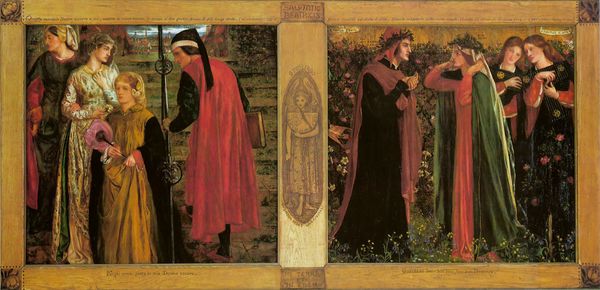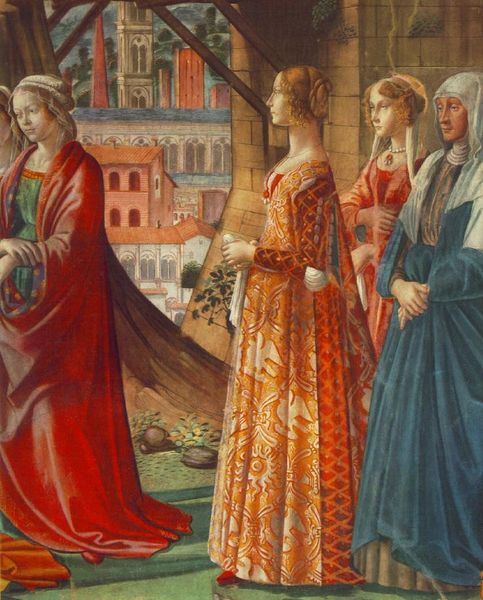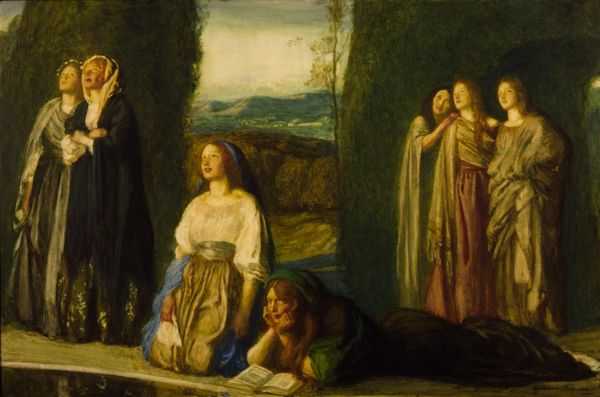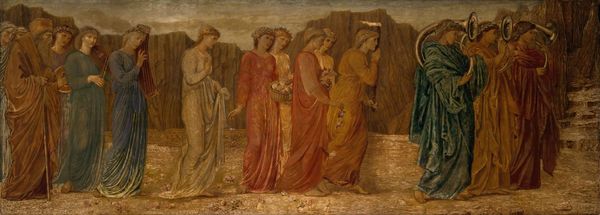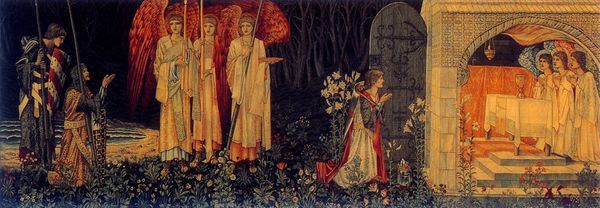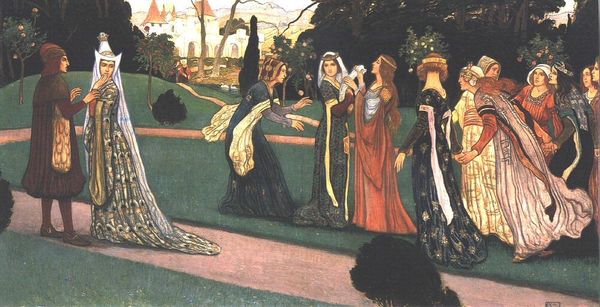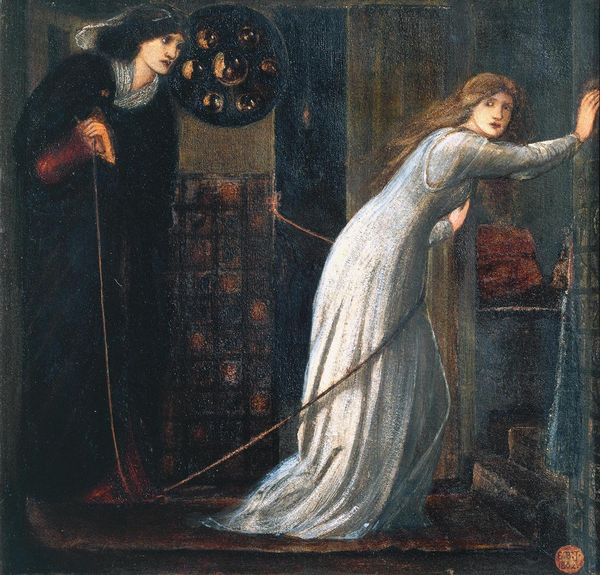
The Meeting of Dante and Beatrice in Paradise 1854
0:00
0:00
dantegabrielrossetti
Fitzwilliam Museum (University of Cambridge), Cambridge, UK
Copyright: Public domain
Curator: This is Dante Gabriel Rossetti's oil painting "The Meeting of Dante and Beatrice in Paradise," created in 1854. It’s currently held in the Fitzwilliam Museum, part of the University of Cambridge. Editor: It's striking how muted the colors are, considering the subject. Almost a somber tone despite its representation of paradise. The pre-Raphaelite dedication to detail is certainly present. Curator: Indeed. Notice how Rossetti employs line and color to create distinct planes within the composition, directing our gaze. Dante is isolated in darkness, while Beatrice and her attendants radiate ethereal colors of serenity and harmony. The visual construction clearly demarcates the earthly versus the heavenly realms. Editor: I'm drawn to the textiles represented, particularly Beatrice's drapery, her garments. Look closely and you realize Rossetti carefully delineated the textures – a subtle emphasis on the tangible earthly materiality of each. It begs the question: What fabrics would constitute garments fit for paradise, or even proximity to the divine? Are these costly imported wools? Perhaps Rossetti even worked from models garbed in fabric woven and dyed using craft guilds’ methods. Curator: Interesting point! Although the precise materiality might be opaque, Beatrice's upward glance and delicate hand gesture contribute to a profound symbolism of the transcendent female figure. The figures holding musical instruments, lyres in this case, function structurally as framing elements, highlighting Beatrice and underscoring the harmonic unity within Paradise. Editor: Beyond this composition, think of Rossetti's process: grinding pigments, layering paint... his labour shaped our view of 'Paradise'. What were the conditions like in his studio? Did these Pre-Raphaelite artists see themselves as more than 'artists' and perhaps even ‘artisans’? Curator: The artist was surely channeling complex religious allegories through a pictorial idiom accessible to a Victorian audience. He provides us, via this composition, with visual vocabulary of devotion, faith and spiritual redemption. Editor: Right. And viewed materially, this "paradise" came at the cost of Rossetti’s labor, material sourcing, and the cultural capital needed to depict such a subject with such detail. I will definitely research if Rossetti worked from models who used artisanal methods. Curator: Precisely. By understanding how the piece orchestrates light, form, and symbolism, we unlock the intellectual core of Rossetti’s Pre-Raphaelite vision. Editor: Indeed, looking at what labor brought "paradise" to the canvas gives new insight.
Comments
No comments
Be the first to comment and join the conversation on the ultimate creative platform.
